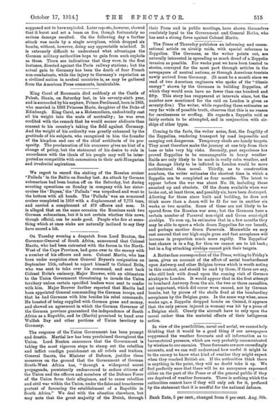Coming to the facts, the writer notes, first, the fragility
of the Zeppelins, rendering transport by road impossible and camping out dangerous. Temporary sheds are handy targets. They must therefore make the journey at one trip from their base or take very big risks. Secondly, past experience has proved Zeppelins to be unmanageable in heavy weather Raids are only likely to be made in really calm weather, and the damage likely to be inflicted in London would be more architectural than moral. Thirdly, as to construction numbers, the writer estimates the shortest time in which a Zeppelin can be completed as four months. The latest to appear before the war was about No. 24, including those smashed up and obsolete. Of the dozen available when war broke out, at least three, and possibly six, have been destroyed. Allowing for those since built and building, he does not think more than a dozen will be fit for use in another six weeks or two months. Some of these are not likely to be spared from the Russian war area; but the Germans have a certain number of Parseval non-rigid and Gross semi-rigid airships. To sum up, he estimates that in a few months they may be able to spare a whole dozen Zeppelins for our benefit, and perhaps another dozen Parsevals. Meanwhile we may rest assured that our high-angle guns and fast aeroplanes will increase in proportion much more rapidly. The Zeppelins' best chance is in a fog, for then we cannot see to hit back ; but in a fog attacking airships cannot pick their targets.


































 Previous page
Previous page